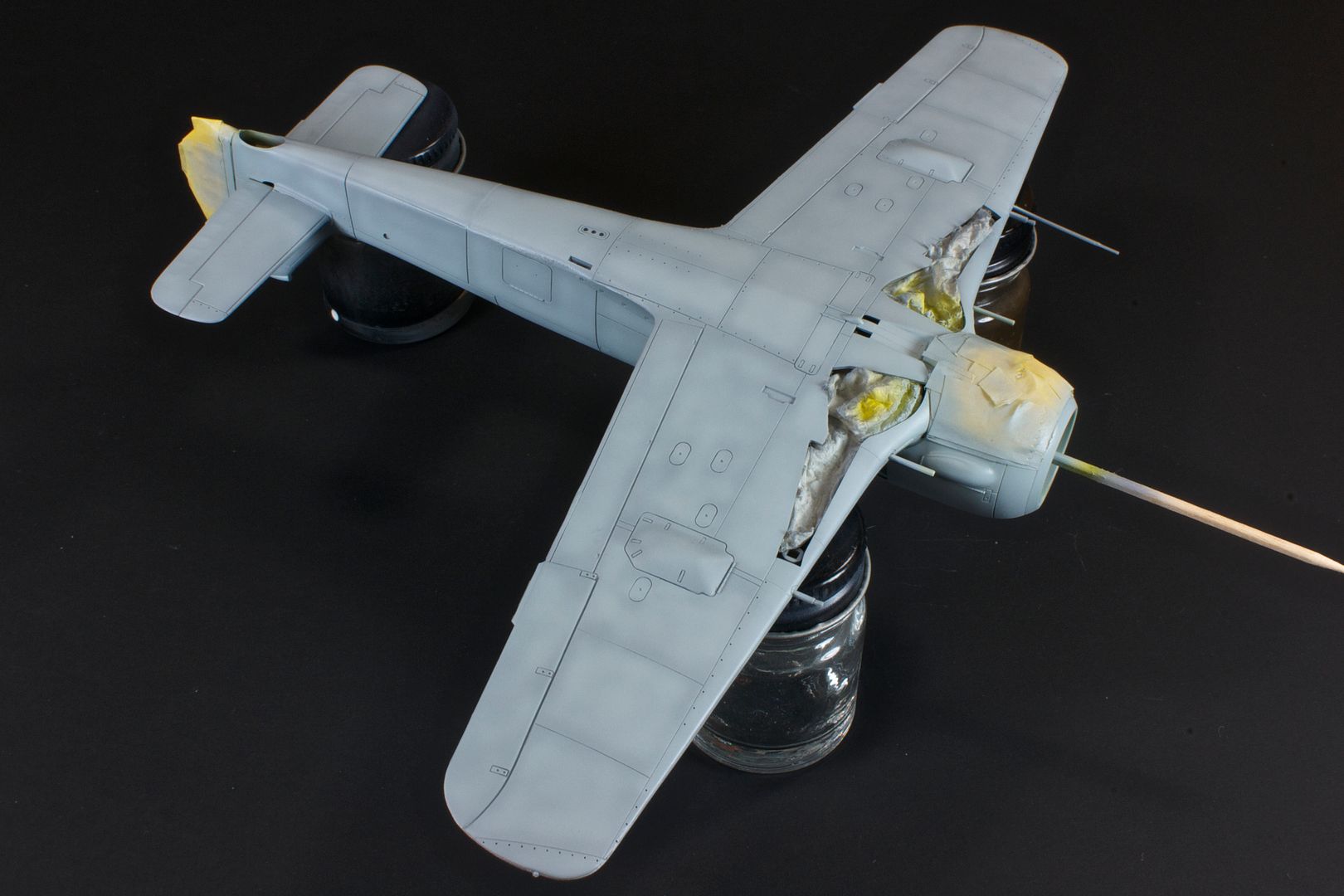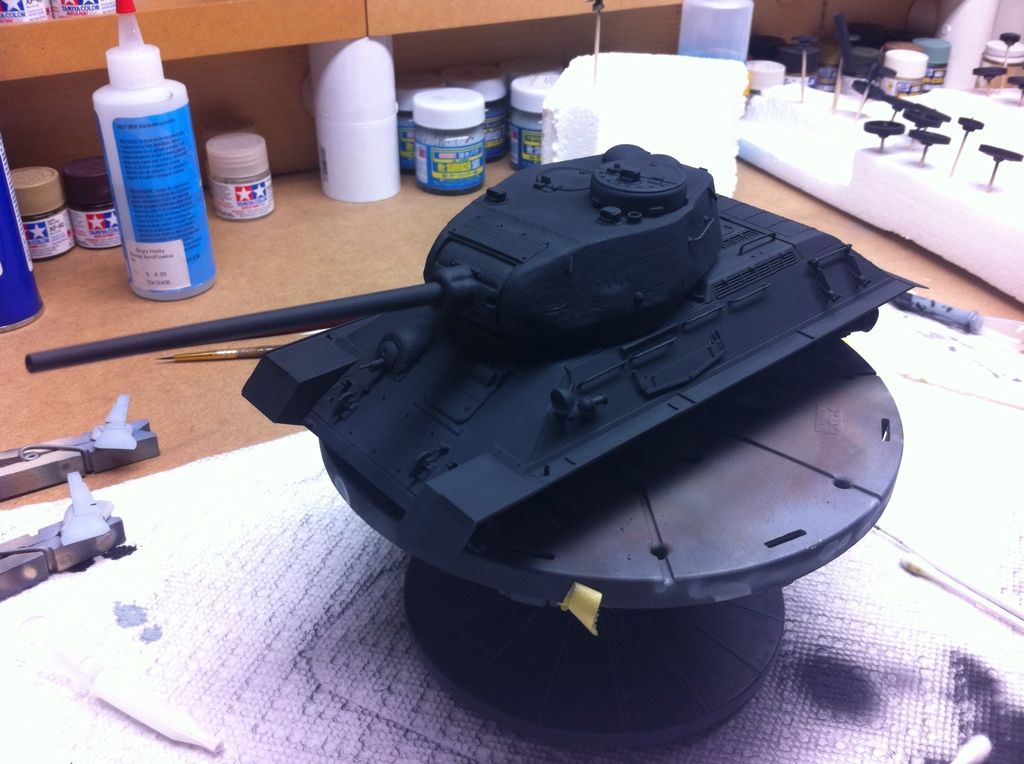Why is this so bad again? Is it just drying times? Is it all paints or just some? Could I spray enamel? Water-based acrylic (ie Vallejo)?
Rain’s in the forecast the next four days, and I’ve got painting to do…
Why is this so bad again? Is it just drying times? Is it all paints or just some? Could I spray enamel? Water-based acrylic (ie Vallejo)?
Rain’s in the forecast the next four days, and I’ve got painting to do…
HIgh humidity = bad time for spray painting…
I would have thought the climate where you airbrush has more to do with it rather then what’s it doing outside.I have never had any problems in this regard.i work in my basement and in the summer I run a de-humidifier and in the winter the heat is on down there,so my painting has never been affected.i understand if you are airbrushing in an open air garage,but shouldn’t these problems with outside conditions not matter if your model space is climate controlled.
Not denying your problems,just asking.
I would have thought the climate where you airbrush has more to do with it rather then what’s it doing outside.I have never had any problems in this regard.i work in my basement and in the summer I run a de-humidifier and in the winter the heat is on down there,so my painting has never been affected.i understand if you are airbrushing in an open air garage,but shouldn’t these problems with outside conditions not matter if your model space is climate controlled.
Not denying your problems,just asking.
For the record, the bench is in the garage, so somewhat impacted by what’s going on outside. Though I do have a heater I run, and it basically acts as a dehumidifier too.
Yes, but why? And which paints? Obviously paints that don’t play well with water, I could see the problem. But a Vallejo or Lifecolor?
No paint plays well with water because it serves as a barrier between your model and the paint coming from your nozzle. It collects water in the air which thickens it and causes drips, runs, etc…contrary to popular belief “water-based” paints are really not water-based at all, but rather acrylic-based more than anything—except for your classic “poster paints”…
I would think that water based paints like Tamiya acrylics would certainly be affected by humidity, and not so much for lacquers and enamels being that they are solvent based.
Personally, I paint in the garage too and when it’s raining outside I paint as fast as possible then move the pieces inside, especially in the fall / winter.
I just sprayed Future on the lower hull and running gear of my BMP-3 a few minutes ago. Tomorrow I plan to sling some wash on it. I’ll let you know if I encounter any trouble!
I don’t think the humidity will affect the paint as it is being applied but will slow its curing time. Use alcohol as your thinner and it will help the paint atomize in humid weather. Once you have the model sprayed, but a cover over it…a large cake cover or even a plastic tote to form a dome over it. All should be good!
In my somewhat limited experience so far acrylics have a much greater sensitivity to humidity than either enamels or lacquers. I’ve only sprayed enamels twice, both Floquil brand (Reefer White and Rust), and they sprayed perfectly in pretty humid conditions with Testors enamel thinner. Most exterior painting on my last 3 models, however, have all been Mr Color with the Leveling thinner.
I paint in my ‘office’ at home (it’s a spare bedroom), but have a somewhat primitve paint booth setup. It’s essentially just a piece of posterboard with a couple of high CFM window mount fans behind it, so I have to have the window fairly wide open when painting lacquers (I rarely use this setup when painting acrylics due to the lack of smell). This exposes it to whatever humidity is out there. The 262 got painted earlier in the year when it was fairly humid and even actively raining one day. The Mig 3 got painted during the end of this last brutal summer when it was dry as a bone outside (I’m in the DFW area, so I get similar weather to you.) Both were mostly painted with Mr Color, though the underside of the Mig 3 got painted with Tamiya cut with X20A. I had zero issues with each regardless of the humidity.
Vallejo, on the other hand, had all sorts of finish issues with my first model back to the hobby early last year when I tried some painting in high humidity. shrug
By the standards of this community I’m barely out of Babe in the Woods level when it comes to airbrush painting, but I still tend to go by the ‘once bitten twice shy’ standard unless I can figure out exactly where I screwed up and how to fix it. Mr Color and Tamiya give me much better predictability under any conditions and spray perfectly, so I’ve given up on water based paint for the major outer surfaces. I’ll still shoot bits of Vallejo for minor, out of the way parts and brush paint it for the little pieces inside the cockpit, engine, and wheel wells, but the main paint job is either Mr Color or Tamiya, both cut with Leveling Thinner.
With high humidity the problem lies with moisture getting trapped between layers or coats. It’s called blushing. Probably would be more noticeable between basecoat and clear. As in your Future or whatever glosscoat looking milky. If you notice anything like that while spraying I’d stop and let it dry/cure. And I wouldn’t try to speed the drying process with heat.
Tony
High humidity will affect lacquers (real, lacquers anyway- don’t know about acrylic lacquer). The rapid evaporation of the solvent causes a blush- the surface of the paint on the model to fall below the dewpoint, and moisture collects on surface. This results in a whitish, rough surface.
High moisture can affect the drying time of enamels. Results will be okay when dry, but the long drying time gets to be a pain. I know a number of folks trying to come up with heated dryers, made from food dissicators, etc.
Would winter conditions have the same impact?
I have my airbrush in the garage too, attached to the house but not heated. As the Canadian winter approaches am I out of luck for airbrushing or can I paint, cover and run it back inside for drying?
While Dallas doesn’t get as cold as Canada, we do have some pretty brisk days here too. In fact we’re expecting to not get out of the 30s tomorrow.
I do my painting, cover the parts in one of those acrylic display cases and bring them into the house. I still wait about 24 hours for everything to cure. I’ve never had any issues though.
Its more about humidity than it is about temp—of course the two are tied together…high humidity is liable to cause you more problems…the BEST time to spray in during a warm day with no humidity…
Thanks for the info.
Looking forward to airbrushing in a toque and a parka this winter!
Damned the torpedoes last night…stuck w/ Model Master enamels, but zero problems that weren’t of my own making…


There ya go, full speed ahead!